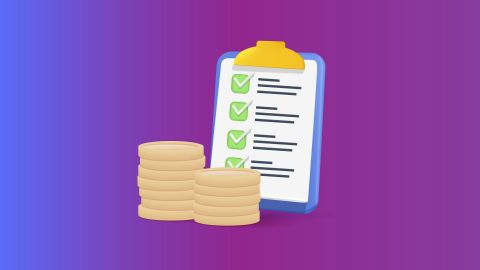Here are three key points to remember while developing a business plan:
- Keep it short: Business plans need to be short and concise. Investors go through a considerably large number of business plans daily, so it is prudent to keep it precise and crisp.
- Know your audience: Compose your business plan in a language that your audience can comprehend. Try to avoid complex terminologies, accommodate your investors, and keep explanations of your product simple.
- Do not be intimidated: The majority of business owners do not hold any business degrees and neither are business experts. They are learning on the go. So, if you know the ins and outs of your business and are passionate about it, writing a business plan would not be nearly as challenging as you think.
Below are the six steps to developing a lender-friendly business plan:
STEP 1: Concept statement: This defines the key characteristics of your business. It includes mission and vision, target market, product, value proposition, and branding.
STEP 2: Market and industry research: The next step is to conduct market research to collect data about your target market, suppliers, industry experts, competitors, and the industry you are operating in.
STEP 3: Design a business plan outline: After collating all the necessary data, the next step is to create an outline. In India, you can follow the template provided by the Government of India.
STEP 4: Develop the key elements of your business plan:
Executive summary: Provide a brief summary of your business covering points like nature of your business, a brief introduction of the management, financial requirements, and budgetary allocations.
Marketing plan: Discuss your product or service offering, the target demographics, competitor analysis, and marketing strategies to be used to achieve sales goals.
Production plan: Detail the stages of production involved and the aggregate time and funds allocated to them.
Financial plan: This section is of particular importance for the investor as this will serve as a comprehensive report of your firm’s financial health.
Remember to include:
- Cash flow statement
- Break-even analysis
- Return on investment
- Sales and profits forecasts for next three years
- Loan purpose
- Loan repayment time frame
If you are planning to apply for business loans, make sure your financial plan clearly outlines how the funds will be used and repaid. Use the business loan EMI calculator to estimate your monthly obligations and evaluate affordability. Also, consider reviewing the current business loan interest rates to plan your repayment strategy better.
STEP 5: Supporting information: Improve your chances of availing business loans by providing potential investors with as much substantial information as possible. You can provide additional information in the appendix section through documents like:
- Financial documents like copies of contracts, leases
- Market research findings
- Bank statements
- Licenses
- Permits
- Receipts
- Patents
STEP 6: Reevaluate: Review and proofread your business plan to ensure all the crucial and necessary information is provided and the unnecessary ones removed. Avoid any typos and spelling errors to ensure the investor is not distracted by the errors and can focus on your business plan.










